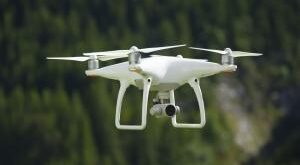HUNTINGTON, W.Va. (AP) – Thirty gifted education students from across Cabell County put their heads together, with the buzzing of drones just inches above them, to solve real-world problems the morning of Jan. 21 at the Robert C. Byrd Institute in Huntington.
Classrooms at Martha Elementary School in Barboursville and Central City Elementary School have been exploring drone technology, specifically the use of drones for important tasks like organ donation delivery, and made the trip to RCBI to complete the next phase of the lesson – building prototypes of the delivery systems.
The collaboration was part of RCBI’s STEM education and Maker programs, where coordinator Deacon Stone said the goal is to show children that high-tech equipment like 3D printers can be another tool in their toolbox.
“Today, we have two local classrooms going through rapid prototyping exercises. One of their classroom concepts is ‘Can drones carry loads?’ We’ve seen them used across the country with organ donation transport, which is fascinating, and they’re working on those concepts in the classroom,” Stone said. “We can get from the drawing board, to the project, and back again in no time. We are laser-cutting, using 3D printing pens, and all of this is made possible by the support of grants from Best Buy and from Toyota.”
Meghan Salter, gifted teacher at Martha Elementary, said the process is a great way for kids to unlock their potential.
“It’s real-world scenarios. It’s problem solving. It’s working together as a team, being an innovator … These kids are the gifted students, so they’re working above their peers, and this is kind of a time for them to shine and work with other students to solve problems,” Salter said. “It’s really important for kids to know this technology exists, what they can do with it and that they’re fully capable of doing it.”
Laura Blackman, gifted teacher at Central City, said the opportunity also fosters the importance of cooperation in the students.
“They have to collaborate and talk to each other and think about how their best idea can mesh with someone else’s best idea to produce success,” Blackman said. “It’s amazing that this is in Huntington, and these kids need to be exposed to a place like this.”
Ten-year-old Southside Elementary School student Kennedy Schultz said while the creative atmosphere provided a fun escape from the walls of the classroom, she also learned skills that will be useful for her and her peers for years to come.
“Lots of us want to code or do drones or 3D printing when we get older, so I think this will really benefit us when we grow up,” Schultz said.
The students worked with various technologies at RCBI to form their prototypes, then tested their creations, analyzed the results and went back to the drawing board to try again.
“The response has been fantastic. Apart from them being engaged and seeing these outcomes, they don’t know that they are learning really highly technical things,” Stone said. “I don’t see a white board back here. We didn’t have a speech. There was no PowerPoint presentation. It’s, ‘Let’s get in, let’s get to work and create results.’”
RCBI’s STEM and Maker programs are working toward a larger initiative to bring mobile toolkits to local libraries and classrooms that don’t have the opportunity to visit the facility.
 Unmanned Aerial Vehicle The latest drone news
Unmanned Aerial Vehicle The latest drone news



